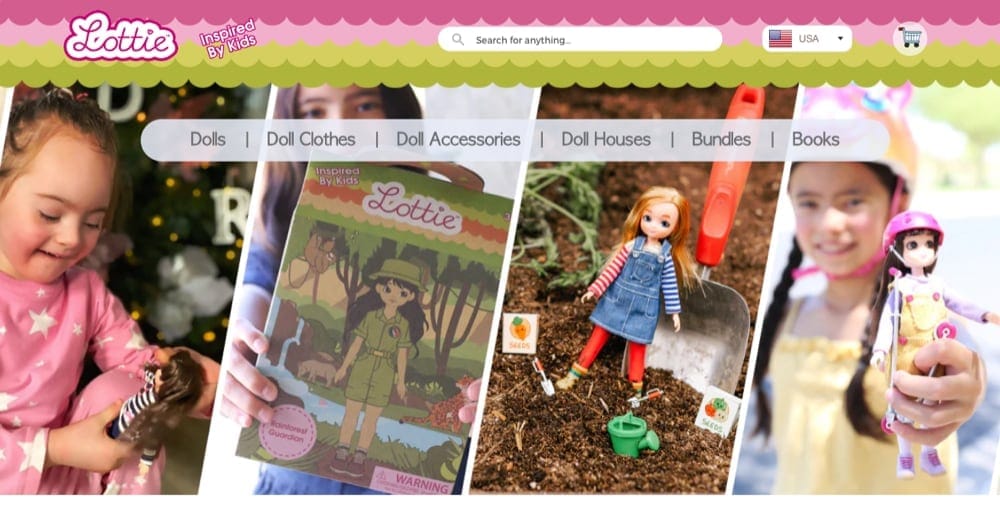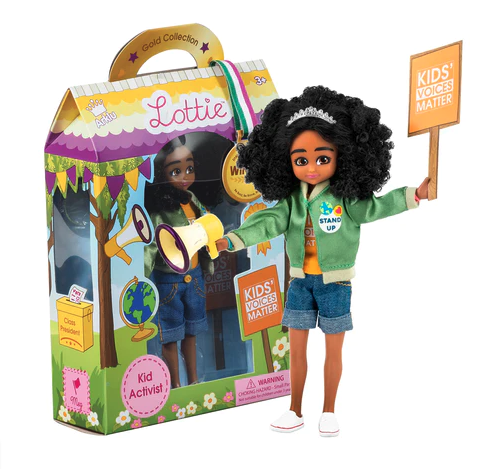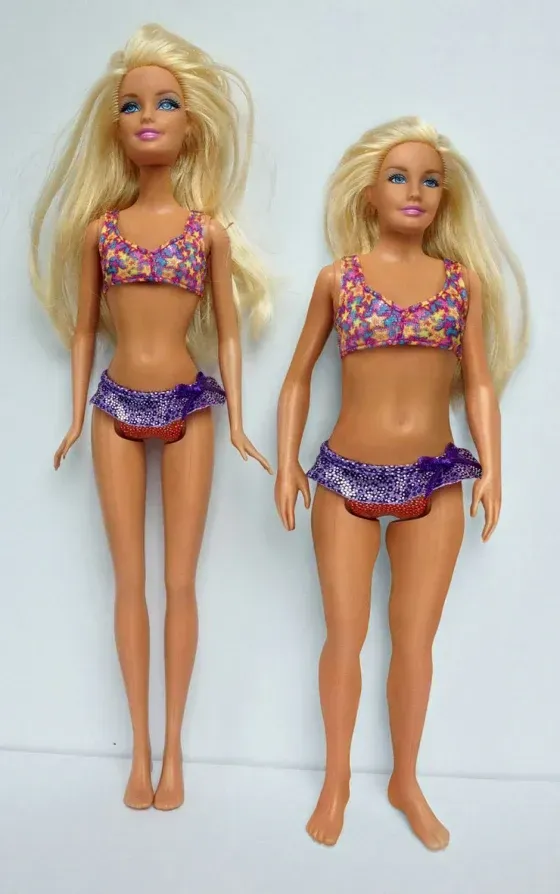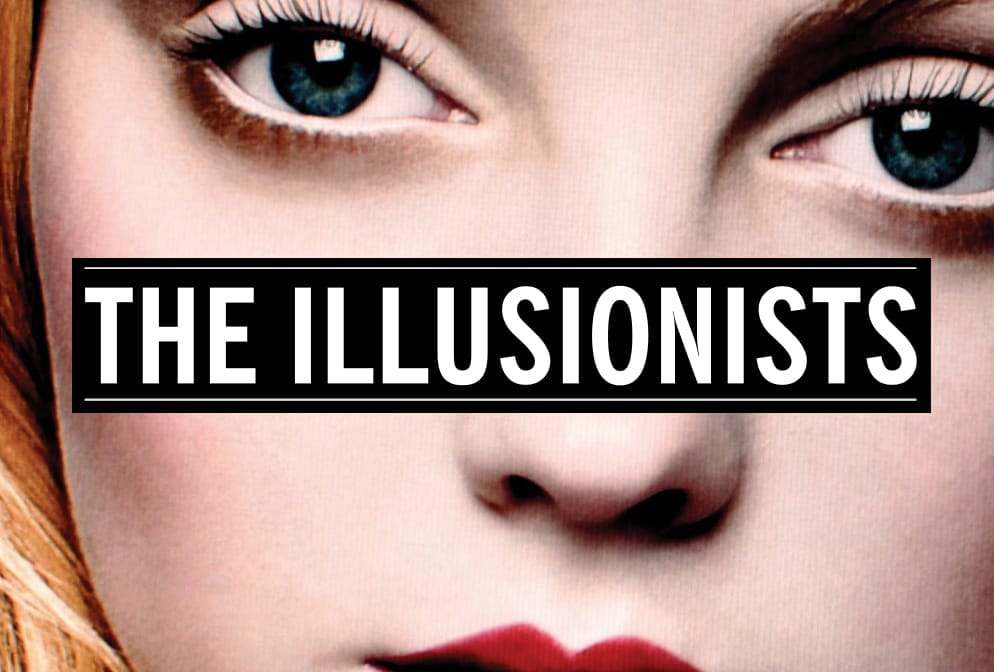This post has been in the making for many months but I hadn't dared speak up about this issue until now – it's such a complicated, potentially divisive topic.
On the upside, it's a good thing I waited to write about Barbie because some recent stats are salient to this conversation and it's good to be analyzing the situation several months after the release of the film Barbie.
I spent the last 7-8 years advocating for women in film, so writing anything slightly critical about a movie directed by a female director felt treacherous to say the least. But this isn't a critique of a film. It's an hopefully thought-provoking post about a cultural phenomenon – Barbie Mania – that has been making headline news for the better part of a year. Something that I find deeply problematic for a variety of reasons. So here we go.
In Praise of Nuance
We live in such a polarized world that it's sometimes difficult to broach difficult subjects with nuance.
It's worth emphasizing that the following concepts can coexist:
- excitement and awe towards director Greta Gerwig for helming a 145 million dollar budget film and for becoming the first female director to surpass 1 billion dollars in sales at the box office with the year's most popular film
- a deep appreciation for the inclusion of feminist themes and thought-provoking topics in the film – with a speech by actor America Ferrera about how it's "literally impossible to be a woman" becoming the most iconic scene in the film, being shared widely on social media and credited for starting important conversations
- appreciation over the opportunities that the film created in strengthening bonds between movie-goers. The experience of attending a screening dressed up in the character's signature pink was something unprecedented in our culture
- concern over the long term effects of Barbie Mania in rehabilitating a brand and driving up sales of a doll that has been proven to trigger negative body image in girls
I cannot stop thinking about the latter point.
In my documentary The Illusionists I devoted a long segment to the topic of marketing unattainable beauty ideals to young girls. It was the hardest chapter to write and edit that would find me emotionally drained by the end of the day - it was so dispiriting to learn about the sophisticated persuasion techniques employed by big brands and advertisers to grab the attention of little girls and their parents.
An excerpt from my interview with Dr. Susan Linn (“Consuming Kids”):
There's a kind of marketing that's called "Aspirational Marketing," and that's another example of how children's just normal developmental evolution is exploited. It's perfectly normal for little kids to want to be like older kids. So preschool children look up to 12-year-olds who look up to 17-year-olds who look up to 25-year-olds, and the marketing industry got the bright idea of saying, "Well, if preschool girls want to be like teenagers let's market to them as if they were teenagers," and so all of a sudden all of these incredibly sort of sexualized dolls hit the market and it began with Barbie.
Dr. Linn continued:
As preschool girls and their parents are told that they don’t want baby dolls and they don’t wanna look like little girls, they wanna look like teenagers, and that becomes the norm in the market.
Pioneering activist Jean Kilbourne (“Killing Us Softly”) said to me:
I think that the sexualization of children is not so much about sex it's really about consuming. That the real point is to turn these children into consumers at a very young age. If you can eroticize shopping in childhood then you will get these people lined up at the malls for the rest of their lives.
Kilbourne continued:
So what they're doing is they're conditioning girls at incredibly young ages to feel that how they look is what's most important about them. That their lovability depends on their sex appeal, and that they can buy this look and this sex appeal if they just chose the right products and try hard enough.
Move aside Barbie: hello Lottie!
When I made The Illusionists I had yet to meet my husband or become a mom.
Then The Illusionists came out. During a speaking engagement at an Irish conference – InspireFest – I found a doll in my speaker's goodie bag: a Lottie Doll. I immediately fell in love with this wholesome doll. I gushed about Lottie on social media, its founder got in touch with me... and I was given the wonderful opportunity to make documentaries about Lottie Dolls.

I became a passionate advocate for these dolls who inspired little girls - and boys – to enjoy activities like stargazing, fossil hunting and building robots.
The dolls won numerous prizes and were included in illuminating studies about the body image of little girls.
Throughout the years of making films for Lottie dolls I observed how their sales and marketing efforts could not match up to the behemoth that is Mattel's Barbie.
Yet, something interesting started happening. I noticed how parents of certain socio-economic groups / educational backgrounds started buying Lottie dolls or alternative dolls to their daughters. Barbie dolls were seen as the equivalent of something toxic and undesirable, especially amongst high-earning and/or highly educated parents.
This was before.
Barbie-mania may have changed all that. And I find that unfortunate and deeply upsetting. Why? I have witnessed directly how Barbie dolls can negatively influence the self-esteem and self-image of young girls.
The problem with the doll (not the film!) – a first hand account
Barbie the movie with its popularity may have rehabilitated a brand that was starting to feel out of step with the times – especially to millennial parents who are values-driven and well-versed in issues like gender inequality, negative body image, and the importance of diversity and inclusion.
I have witnessed firsthand the devastating negative effects that a Barbie doll can have on a little girl.
Nina (name has been changed) a gorgeous and vibrant toddler that I have known since she was a week old has a collection of Barbie dolls, gifted to her by her family. Nina is biracial, half-black and half-white. I was with her when she had just received one of her first Barbie dolls: “Barbie Loves the Ocean". Within a few days, Nina started complaining non-stop that she "was ugly" and she "hated her hair" because her naturally kinky hair looked nothing like her Barbie's long straight mane.
Upon hearing this, I immediately ordered on Amazon "Princess Hair" by Sharee Miller – a book celebrating the diversity and beauty of black hair... but the damage had already been done. Nothing we could say or read to Nina impacted how she saw herself. Her fascination with Ocean Barbie and her desire to look like her was too strong.
My own daughter has a collection of Lottie dolls – which had been gifted to me by the brand when I was making promotional films for them – and she absolutely loves them. So much so that when she sees Barbie dolls she's utterly uninterested in them. Part of the reason may also be that I've repeated to my daughter multiple times that I don't like Barbie dolls because they have "bodies that don't exist in real life and their legs and arms are too thin and too long and just strange. Mamma doesn’t find them interesting.”

Indeed, according to the “Get Real Barbie” campaign - created by the South Shore Eating Disorders Collaborative (SSEDC): “At 5’9” (175cm) tall and weighing 110 lbs (49.9 kg), Barbie would have a BMI of 16.24 and fit the weight criteria for anorexia. She likely would not menstruate. If Barbie was a real woman, she’d have to walk on all fours due to her proportions.”
Barbie mania may have induced collective amnesia in us all. I vividly remember when - over a decade ago – a story went viral, showing how someone with a 3D printer had created a Barbie doll with realistic body proportions... an act that highlighted how unattainable Barbie's body really is. From the original article on Today.com:
Using a 3-D model, Photoshop and the Centers for Disease Control’s measurements of the average 19-year-old woman, artist Nickolay Lamm of MyDeals.com has created a rendering of what a Barbie doll would look like if it better resembled an average woman. He used the CDC measurements to make a 3-D model, dressed it up like a Barbie using Photoshop, then photographed a standard Barbie doll next to his model to show the difference.

When my daughter is with Nina, I comically hide all the Barbie dolls in sight at the first opportunity and give the girls Lottie Dolls to play with.
Nina loves to play with the Lottie doll that looks just like her. I'm about to order it for her and send it to her home.
I am not Nina’s parent so there is not much else I can do - I brought up these issues to her immediate family multiple times, but the Barbie dolls persist. Realistically all I can do and control is my own daughter’s relationship to the Barbie dolls (inexistent for now), gift Nina alternative dolls and empowering books… and that’s about it.
Follow the Money
Barbie dolls are available in most toy stores - unlike dolls like Lottie - and cost far far less.
Availability and affordability are one thing. And there's also the publicity element.
Did you know that the marketing budget for the movie Barbie was higher than the film's own budget? Making the movie Barbie cost 145 million dollars – and marketing it cost an additional 150 million dollars (source: Business Insider).
When you think of the movie Barbie, your first thought may be: a fun movie experience with important feminist messages. But you know what my first impression is? A 2 hour movie commercial for the doll Barbie.
Mattel's Barbie sales have gone up 26% in the United States alone following "Barbie Mania". They are likely to keep climbing around the world as the fun, awards-winning film has a cool factor that keeps transferring to the brand itself. Before the film was released, Barbie sales had been on a downwards trajectory for years.
Follow the Science
You are not convinced yet about a “problem with Barbie”? Let’s turn our attention to the scientific studies I had mentioned before.
Professor Lynda Boothroyd at Durham University in the United Kingdom spearheaded research to investigate the influence of Barbie dolls in contrast to more realistic-looking dolls (like Lottie and Dora) on the self-image and body ideals of little girls.
The big takeaway from Boothroyd’s study – published in 2021 in the scientific journal Body Image – is that ultra-thin dolls like Barbie seem to make girls desire a thinner body… unlike more realistic dolls like Lottie or Dora. An excerpt from the paper:
Ultra-thin fashion dolls may represent a risk factor for thin-ideal internalisation and body dissatisfaction amongst young girls. We asked thirty one 5- to 9-year-old girls to engage in interactive play with commercially available dolls which were either ultra-thin (Barbie and Monster High) or represented a putative realistic childlike shape (Lottie and Dora) and to indicate their perceived own-body size and ideal body size on an interactive computer task both before and after play. There was a significant interaction between testing phase and doll group such that playing with the ultra-thin dolls led to the girls’ ‘ideal self’ becoming thinner. A further 46 girls played with the ultra-thin dolls and then played with either the same dolls again, the realistic childlike dolls, or with cars. Initial play with the ultra-thin dolls again produced a drop in perceived ideal own body size.
In addition, girls who have been exposed to ultra-thin dolls like Barbie still desire a thinner body even after playing with Lottie and Dora dolls… so the effect of Barbie is long-lasting.
Would you give a little girl a Barbie doll knowing that playing with it would make the girl dissatisfied with her own body?
Going back to what I shared at the beginning, it’s worth emphasizing that two concepts can coexist: you can enjoy watching the Barbie movie… and at the same time be wary of the effects of actual Barbie dolls on little girls and their body image.
I would never give my daughter a Barbie doll. If she received one as a gift, I would simply return the doll to Mattel, taking advantage of their “Play Back” recycling program. I wouldn’t want to donate the ultra-thin doll and perpetuate the cycle of negative body image in other young girls. By 2030 Mattel pledges to make 100% of Barbies out of recycled, recyclable or bio-based materials. Much easier to dispose of in an environmentally friendly way. And that’s most definitely a good thing.
💓 Did you enjoy this post? Share it with a friend!
👫 Follow me on Mastodon (my favorite network!) or Pixelfed. All my other links are available here: elena.social
📽️ If you'd like to support my work, you could buy or rent my documentary The Illusionists on the globalization of beauty. Watch the teaser:

💌 If you'd like to say hi, my contact information is here
✏️ If this post resonated with you, leave a comment!

